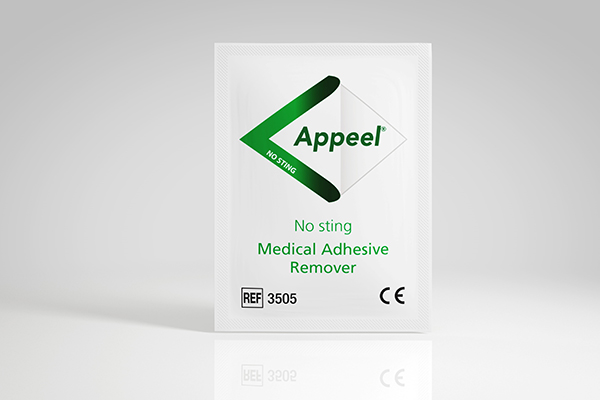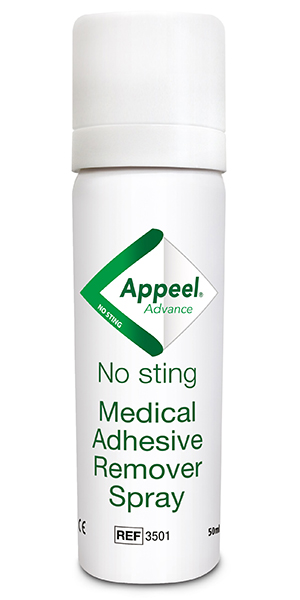The issues people with a stoma most often have to deal with involve the peristomal skin—the skin around the stoma. These problems usually result from a leaking pouch, which can damage the skin and potentially cause infection. Therefore, watching out for these issues and taking good care of the skin is essential.
Getting checked out
If your skin looks unusual or causes you discomfort, you should ask your stoma care nurse for a review. The nurse will look at the following:
• Any pouches and accessories you are using, including the size of the hole (aperture) in the baseplate
• Your skin, including its shape, colour and any visible signs of damage
• Your stoma, including its temperature, colour and output.
• This allows the nurse to identify what problem you are having, what’s causing it and how best to solve it. They will then be able to help you tailor a treatment to your individual needs.
You may be asked to demonstrate your changing routine. This way, the nurse can see if you are missing anything or making any mistakes, and then teach you to improve your method. Ostomates are usually taught how to care for their stoma in hospital before they are discharged, but these skills can become rusty and may need refreshing.
Sourcing the problem
There are two main sources of peristomal skin irritation: excessive moisture and inappropriate contact with medical devices.
We are all familiar with how, if we spend a long time in the bath, our fingers become pale and wrinkled. Likewise, if the peristomal skin is exposed to too much moisture for too long, it can become soft, discoloured and wrinkly. If it goes on too long, it can develop into a problem known as moisture-associated skin damage (MASD). One of the first signs can be the skin becoming paler, and this top layer of skin might be removed with cleaning, which can become uncomfortable. Alternatively the skin can become red (the medical word for this is erythema) and broken (called erosion). This moisture is often the output from the stoma, which irritates the skin (irritant contact dermatitis) and can make it harder to form a new seal with the pouch.
Stoma pouches are attached to the body using a variety of adhesive materials. Using the wrong adhesive, or the right adhesive in the wrong way, can cause an issue known as medical adhesive-related skin injury (MARSI). Taking the pouch off too roughly can strip away the very top layer of skin; fragile skin, or changing the pouch many times a day, can make this more likely. Likewise, a small minority of people are allergic to some of the materials from which stoma pouches are made, and using the wrong material can cause irritation.

If skin is exposed to moisture for too long, it can become soft, discoloured and wrinkly
Finding a solution
Staying dry
As too much moisture on the skin can cause problems, it’s important to thoroughly clean and then dry the peristomal skin. This will also make it easier to form a good seal.
Measuring up
The baseplate of a stoma appliance has a hole (called an aperture) for the stoma to fit through. Your stoma should fit snuggly within the aperture, which should be the same shape as the stoma but with about 2–3 mm of space around the edges. If the gap is much larger, it will allow moisture to get onto the skin and cause damage. It is important to ensure your aperture is exactly the right size, whether you get your pouches cut-to-fit or pre-cut. The size you need may change over time. This is because your stoma and your belly are likely to change size and shape, especially in the weeks after an operation or if you gain or lose weight.
Filling creases
A stoma appliance needs to make a good seal with the peristomal skin to avoid the output leaking out. This is easiest with a flat tummy and a spouted stoma. However, if your skin has bumps, creases or folds that leave cracks in the seal, when you change your pouch, these can be filled in with filler paste or seals (washers or rings). Likewise, if your stoma lies flat (flush) or below (retracted) the level of your skin, you might need to use a pouch with a convex baseplate. Convex pouches put pressure on the skin to make sure the stoma output drops into the bag, but they should only be used with the direction of a stoma care nurse, as they can cause further problems if used incorrectly.
Controlling output
Some stomas produce more liquid output than others, especially ileostomies and urostomies. This means that there will be more output to potentially touch the skin, and the appliance will need to be removed more frequently. If you have a stoma with a particularly high output, you may need to take extra precautions, such as finding ways to control the amount of output or putting a protective ring around the stoma.
Wearing it right
A pouch is usually changed every 1 or 2 days, depending on the type of stoma. If it is left on too long, the output from the stoma will damage the inner edges of the pouch adhesive. If this is the case, you should change pouch more frequently.
However, changing it more often than you have to is not good for the skin either, as removing the pouch pulls at the top layer of skin. In this case, you should try to remove the pouch less frequently. People with a colostomy could consider a two-piece pouch, with a bag that can be replaced without having to remove the baseplate.
People with fragile skin, such as older adults or young children, could consider asking their stoma care nurse about changing using an adhesive remover. This product helps to dissolve the adhesive on the baseplate, making it easier to remove without damaging the skin.


Adhesive removers can reduce skin stripping and are available as wipes and sprays
Having confidence
Peristomal skin problems are uncomfortable and fairly common. However, they are not something you need to put up with, and you should be confident that they can be resolved with the right support and advice from a stoma care nurse.


Jennie Burch is Head of Gastrointestinal Nurse Education at St Mark’s Hospital, London

